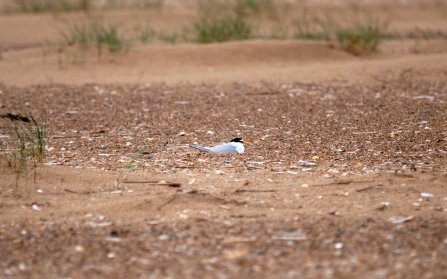Little terns, the UK’s smallest tern species, return each April to breed on beaches at fewer than 60 sites around the UK. Traditional colonies at South Gare on the Tees and Donna Nook in Lincolnshire have already been lost due to changes in our coastline and just one nesting site remains in Wales.
Predictions of increased coastal flooding and sea level rise caused by climate change could spell disaster for these elegant seabirds. This warning comes as the Intergovernmental Panel on Climate Change (IPCC) issue their latest reports on climate change.

